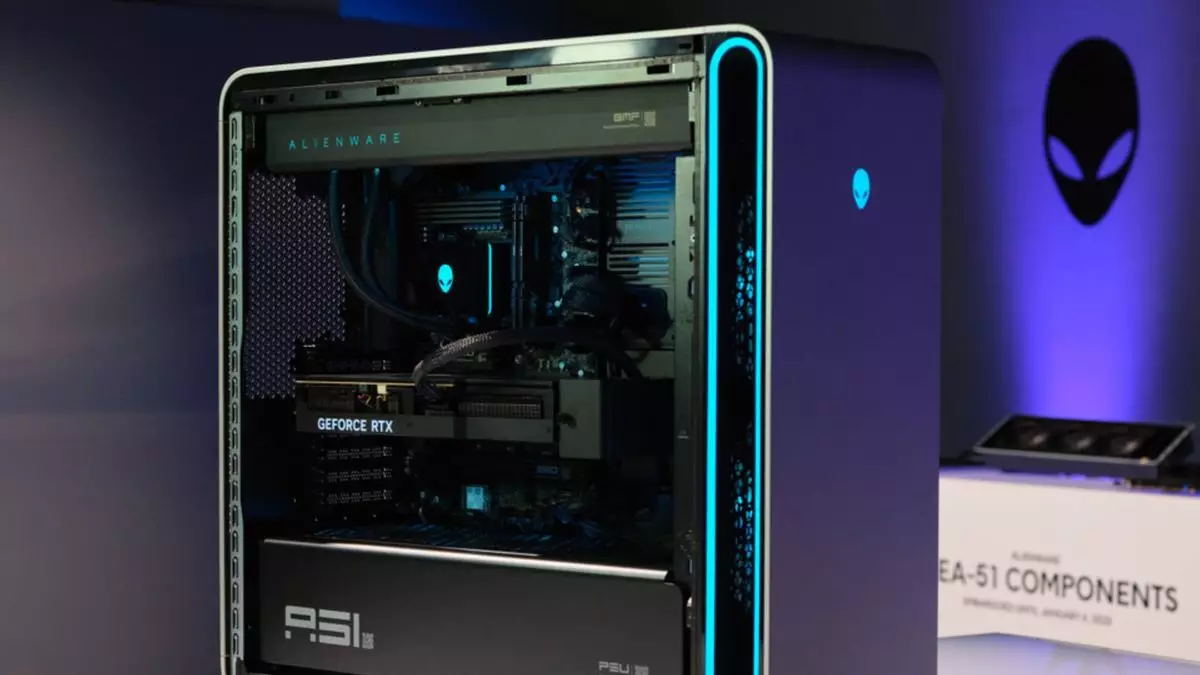Alienware has built a reputation for producing visually stunning gaming desktop rigs, but behind the allure of sleek aesthetics lies a challenge many gamers face: limited upgrade paths. The recent unveiling of the Area-51 desktop at CES suggested a promising shift toward greater modularity. However, a closer examination reveals that the supposed flexibility comes at a cost, leaving many enthusiasts feeling disillusioned. The introduction of the upgradeable Area-51 AAT2250 highlights a few promising features but simultaneously raises questions about accessibility and value.
The pivotal element to the upgrade narrative is the newly announced AlienFX board cable conversion kit, available for an additional $35. For a price that could be considered steep for a handful of cables and a bag of nuts, you gain the ability to connect third-party motherboards to the Area-51 case. The kit includes wiring essentials like a power switch cable and fan power bridge, which enable compatibility while facilitating Alienware’s unique features such as fan control and RGB lighting. While this conversion kit is a nod toward flexibility, many gamers are likely to see this as a puzzlingly unnecessary hurdle in the journey to build the ultimate gaming machine.
The Indispensable Upgrade Dilemma
While the excitement over the Area-51’s upgraded cooling system and quiet operation is palpable—with claims of up to 13% cooler and 45% quieter performance—these specifications seem overshadowed by the upgrade reality. Gamers seeking to seize this enhanced performance with a different motherboard must also factor in the cost of a compatible power supply if not opting for the specific ATX12VO motherboard. This lack of straightforward compatibility raises the question: Is an upgradeable rig really upgradeable if purchasing additional components is a requirement?
Moreover, existing owners of older Area-51 rigs find disappointment in the news that this new conversion kit won’t work with their models. Considering the last major version, the R4, has been off the market since 2017, there’s a sense of alienation for long-time Alienware patrons. Millions invested in past models are seemingly disregarded as the brand reinforces its focus on the latest iterations. In an industry where continuity is key, Alienware’s approach feels disconnected and can leave avid fans feeling sidelined.
Innovative Features with a Caveat
The design of the new Area-51 desktop does present some noteworthy advances. Many gamers will appreciate the engineering behind better thermal management, marked by the positive pressure airflow system designed to keep out dust while allowing for efficient cooling. Coupled with the potential integration of the latest RTX 50 series GPUs, the Area-51 indeed has the makings of a performance beast. Yet, for a desktop marketed as “the most quiet, coolest running, and highest performance,” one must question how significant the performance gains are when weighed against the cumbersome upgrade limitations.
The thoughtful touches in UI enhancements, such as QR codes next to upgradable components that guide users on how to expand their rigs, show a deliberate effort to cater to gamers keen on personalizing their setups. However, these progressive traits cannot overshadow the primary frustration when it comes to motherboard upgrades.
A Mixed Bag of Promise and Disappointment
Despite the commendable efforts in design and performance metrics, Alienware’s approach to upgrades feels like two steps forward and one step back. The balance of aesthetic appeal and functionality remains a compelling aspect of the Area-51, but this creates a dissonance when upgrades do not come as easily as one might hope. Modular systems are markedly better than closed architectures, but in this case, the additional costs associated with making the system truly upgradeable could deter potential buyers.
Ultimately, while Alienware has undeniably made strides towards enhancing user experience with their new desktop, the format’s inherent constraints around motherboard upgrades overshadow its advancements. Gamers craving an investment that will not just perform but evolve may find themselves contemplating the practicality of their choice. It remains to be seen whether Alienware can bridge the gap between their stunning designs and the core functionality that dedicated gamers seek.

